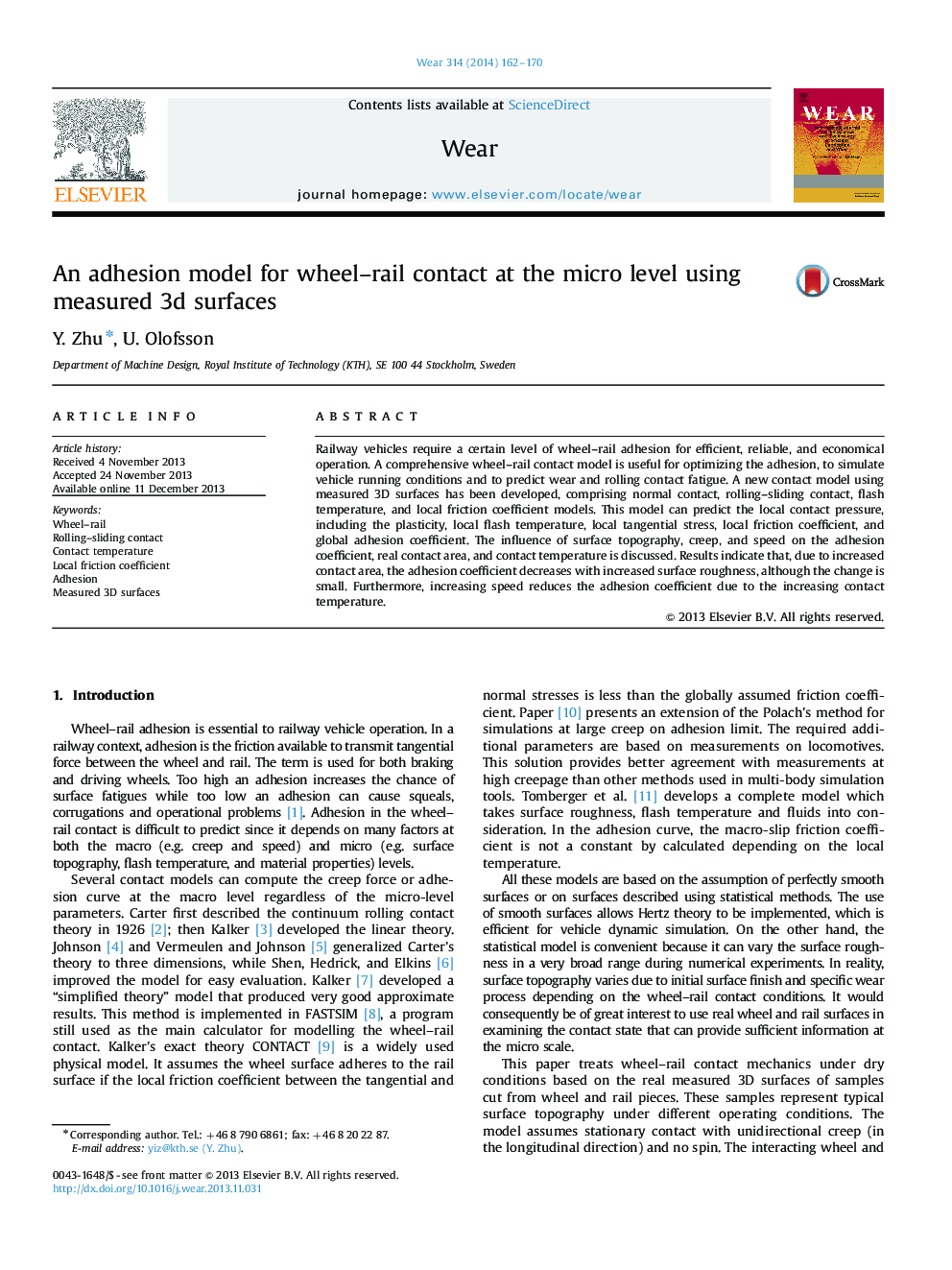| Article ID | Journal | Published Year | Pages | File Type |
|---|---|---|---|---|
| 617318 | Wear | 2014 | 9 Pages |
•A numerical wheel-rail contact model is developed including normal contact, rolling sliding contact, contact temperature and local friction coefficient.•Measured 3D surface topographies of wheels and rails are used for the input for the simulation.•A smoother surface topography will present a smoother pressure distribution which will lead to larger areas of the high contact temperature.•Adhesion coefficient decreases with increased speed due to increased contact temperature and contact area.
Railway vehicles require a certain level of wheel–rail adhesion for efficient, reliable, and economical operation. A comprehensive wheel–rail contact model is useful for optimizing the adhesion, to simulate vehicle running conditions and to predict wear and rolling contact fatigue. A new contact model using measured 3D surfaces has been developed, comprising normal contact, rolling–sliding contact, flash temperature, and local friction coefficient models. This model can predict the local contact pressure, including the plasticity, local flash temperature, local tangential stress, local friction coefficient, and global adhesion coefficient. The influence of surface topography, creep, and speed on the adhesion coefficient, real contact area, and contact temperature is discussed. Results indicate that, due to increased contact area, the adhesion coefficient decreases with increased surface roughness, although the change is small. Furthermore, increasing speed reduces the adhesion coefficient due to the increasing contact temperature.
